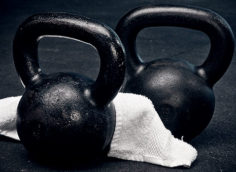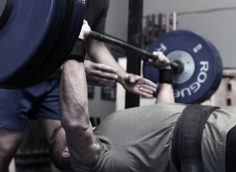Humans move in all directions. We go forward and back, side-to-side, twist and turn. It only makes sense that we train in each of these planes of movement so our body can work as one coordinated piece.
Being strong in all directions leads to less pain and less vulnerability to injury. But before we continue, let's make sure everyone's on the same page.
The 3 Planes of Movement
- Sagittal – Forward and backward movements such as squats, deadlifts, and kettlebell swings.
- Frontal – Side-to-side movements such as lateral lunges or jumping jacks.
- Transverse – Movements that have rotation. Think Turkish get-ups or swinging a golf club.
Most people spend a lot of time in the sagittal plane – sitting, for instance. Likewise, much of the average person's daily activity is likely sagittal-dominant. Our environments, in fact, are engineered for us to move straight forward and straight up and down.
Similarly, people tend to spend too much time exercising in the sagittal plane. Let's use kettlebell swings as an example. They do great things, but can we swing ourselves into sagittal dominance and lose our capacity for movement in other planes? You bet.
If you aren't moving outside the sagittal plane enough, you aren't strengthening those muscles that support you when you move in the other directions. Being strong in three dimensions allows athletes to move powerfully without sacrificing their speed. It makes them agile, resilient, and responsive.
Weightlifters, too, need to strengthen their lateral and rotational stability to improve their ability to get into a safer position to lift heavy weights.
Adding Multi-Planar Exercises Into Programming
There are countless options for adding multi-planar movements into your workouts. Here's a short list of the best:
1. Single-Leg Exercises (Lunges, Split-Squat Variations, Single-Leg Deadlifts, Step-Ups)
While these seem like a sagittal plane exercises, they impose a lot of stabilization on the frontal and transverse planes, thus increasing movement variability while improving stability. You can load the weight evenly between the two hands, or, contralaterally offset the load. Offset loading improves rotary stability, and loading it contralaterally is a bonus because it more closely resembles our natural gait.
Adding a reciprocal reach to lunges, split squats, or step-ups will add some transverse plane emphasis to unilateral movements, and again help to more closely mimic the pattern of natural gait.
Here's an example of a lunge with reciprocal reach. You can do lunges stationary, walking, or make them dynamic and do jump lunges.
Next is an example of a split-squat with reach. (We also added a jump, just for grins.)
2. Split-Stance Exercises
You can also add some multi-planar emphasis to split-stance exercises. For example, try doing overhead presses in a split stance. When you set up, the distance between your feet should be about the same as a normal walking stride.
Feel the floor with your front foot, keep your knees soft, ribs down, and abs engaged. Rotate your pelvis toward your forward foot. This will help you to internally rotate your pelvis on your forward femur, also known as acetabulo-femoral internal rotation, or AFIR for short.
3. Lateral Heidens with Reciprocal Reach
This is a great way to add some glute activation at the beginning of a workout or to elevate heart rate. Adding a reciprocal reach adds rotational movement to the exercise. Think "stick the landing", tip your hips side to side, and then reach across midline.
4. Rotational Medicine Ball Slam
Think about doing a full circle and full rotation every time. If you go back and forth making a rainbow shape, you aren't getting full rotation.
5. Lateral Crawl
Set up on all fours with your hands under your shoulders like a standard bear crawl. Push away from the floor (for serratus activation and better rib position) and engage your abs.
Maintaining your abs and rib placement, extend your legs back like a plank. As you crawl back and forth, continue to actively push away from the floor and keep your abs engaged.
6. Lateral Lunge Variations
There are several options. You can do these using only bodyweight as a warm-up, or go heavy and use a goblet hold. You can also offset them by holding a kettlebell in the rack position. For some extra fun, do them on a slide board or with sliders.





